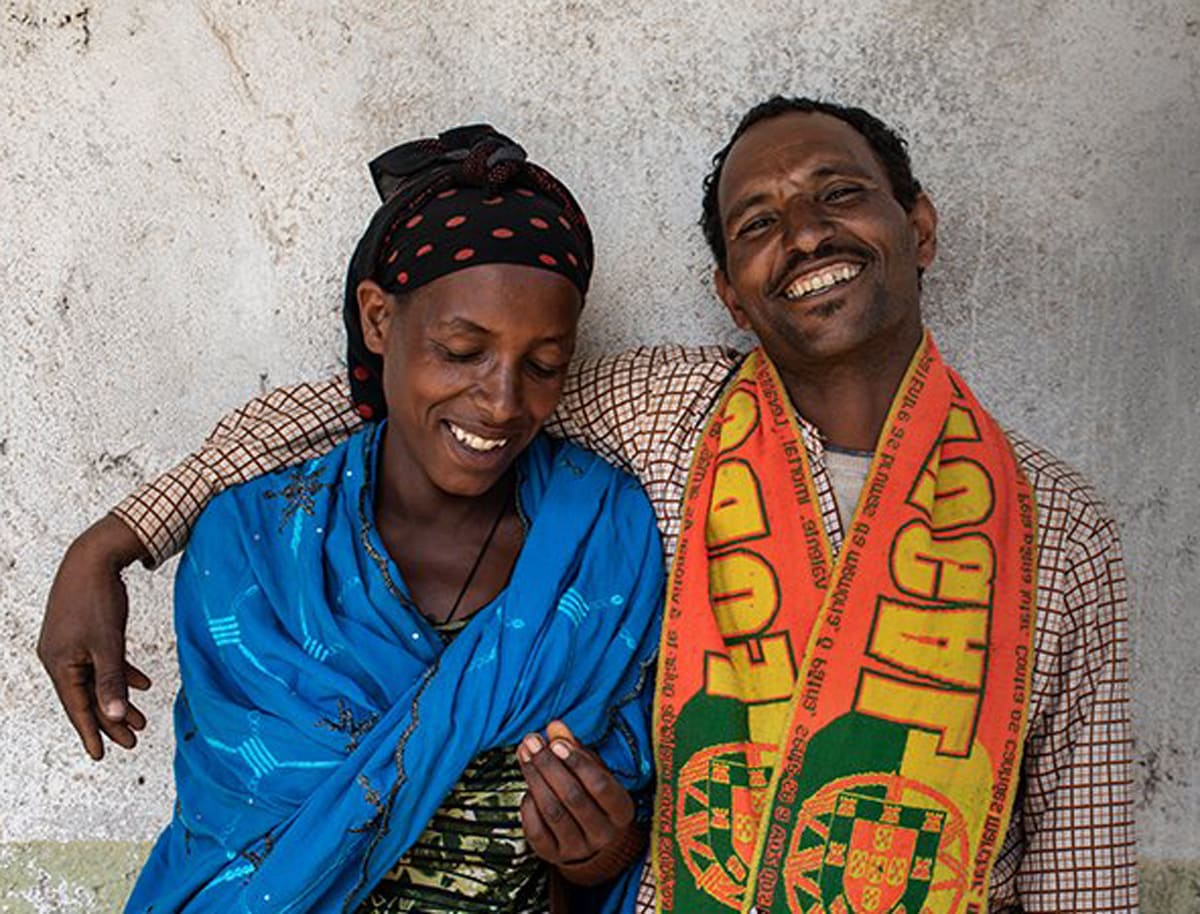While couple communication is a key to uptake of modern contraception in Ethiopia, researchers say such communication is hindered by gender norms that ultimately let the man be the primary decision maker.
In a study using survey and interview data and published last month in the journal Reproductive Health, researchers found that while many women initiate conversations about reproductive health, men are ultimately making these decisions themselves. The research finds that only truly equitable communications – where men and women each have a true say in what happens – will improve health outcomes for women.
“Many times, women initiate discussions, but the man makes the final decision,” says the Johns Hopkins Center for Communication Programs’ Nandita Kapadia-Kundu, the first author of the new study. “If a woman wants to use an IUD and her husband wants her to use the contraceptive pill, she will use the pill.”
Data indicate that male-dominated decision making is a common norm, as is a pattern of inequitable couple communication in rural Ethiopia. Using a gender lens facilitated the identification of low decision making by women. The researchers found that couple communication can only work if there is a more nuanced understanding, such as asking whose opinions count, who defers to another’s decisions and what the consequences are if the couple disagrees.
The norm in parts of Ethiopia, those interviewed said, is for families to have seven to eight children, though four to five is acceptable. Fewer than that and women are seen as selfish if they choose to have fewer and men’s status may be questioned. Women’s health can be impacted if they have too many children too close together and if they continue their heavy household workloads through the end of pregnancy.
When trying to determine who makes decisions about contraception use, researchers in the past have asked whether it was the wife, the husband or “both.” That “both” option hides a lot of inequity, as women are more likely to say both even if, in reality, their opinions are never considered. “’Both’ is hiding the real truth,” Kapadia-Kundu says.
In the present study, “we know that decision making is squarely in the hands of men even though women initiate discussions,” the researchers write. “In such a context, promoting ‘respect’ for women’s opinions and decision making will lead to women’s voices being heard in her own home as well as her decisions being accepted. While superficially, couples may seem to be ‘communicating,’ an in-depth analysis indicates that a basic gender inequity dominates these interactions.”
A 60-year-old man in a focus group told researchers: “Men’s opinion always prevails. Most women here are illiterate, thus men lead their household.”
The key to making inroads, Kapadia-Kundu says, is using a stronger gender lens in strategic behavior change programs. “To rectify the gender imbalance in couple communication and decision making, for example, men and young boys need to be an integral part of gender-centered initiatives to promote gender equitable norms,” the researchers write.
The research was conducted in 2016 and only published now because of COVID and other delays. Already, Kapadia-Kundu says, she and others have incorporated these findings into programs designed to improve contraceptive uptake in the country. She has also improved the measurement used for couple communication and decision making in subsequent studies in Bangladesh, Ethiopia, Mali and Liberia.
Ethiopia has made great strides in reducing its fertility rate. According to the World Bank, women gave birth to an average of 6.5 children in 2000. In 2020, the figure was 4 births per woman. Still there is work to be done. In 2016, the use of modern contraception was 35 percent among married women and Ethiopia’s unmet need for family planning was 22 percent, indicating that services have yet to reach couples in need of contraceptive products.
According to the CCP-led study, contraceptive rates depend on where people live, with 54 percent using contraception in the Amhara region and 29 percent in the Oromia region.
“Applying a gender lens to social norms, couple communication and decision making to increase modern contraceptive use in Ethiopia, a mixed methods study,” was written by Kapadia-Kundu, Habtamu Tamene, Minyahil Ayele, Feleke Dana, Simon Heliso, Sanjanthi Velu, Tsega Berhanu, Guda Alemayehu, Lindsey Leslie and Michelle Kaufman.





